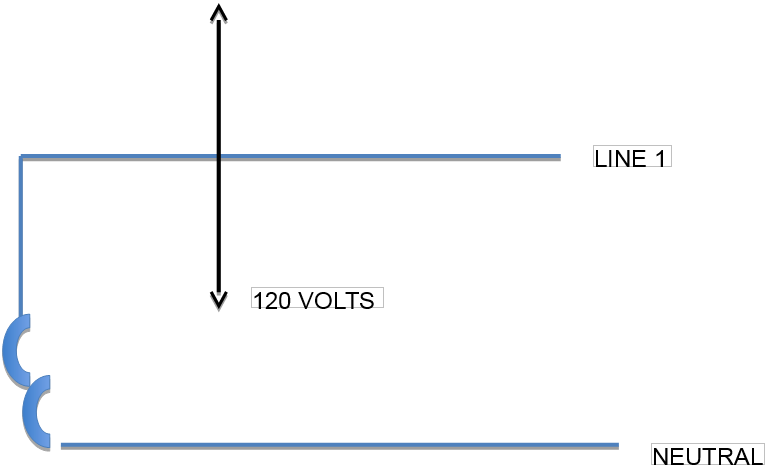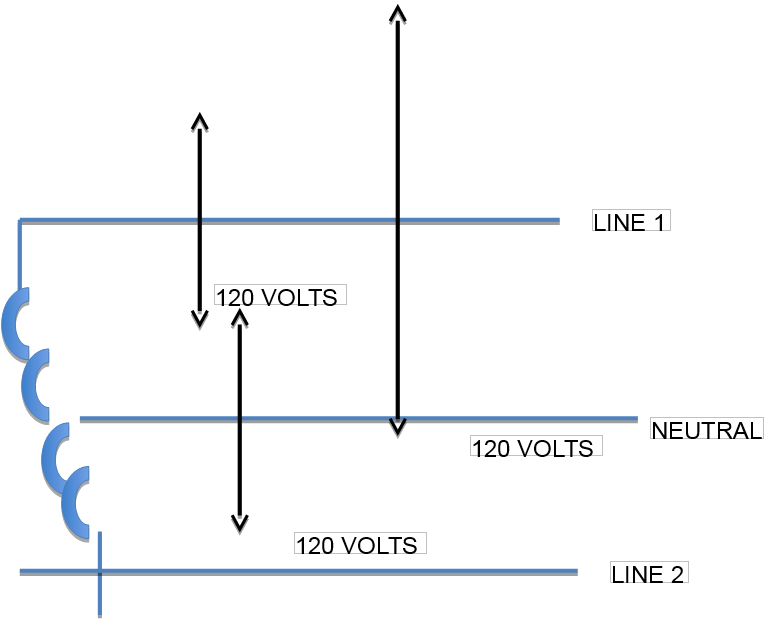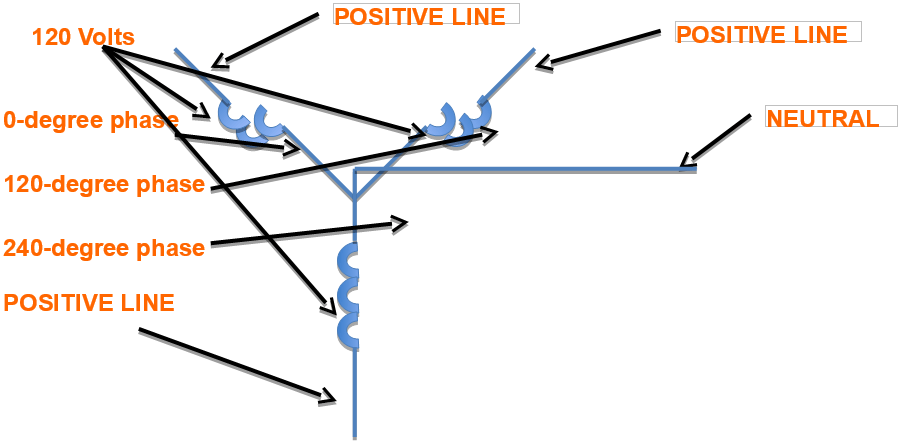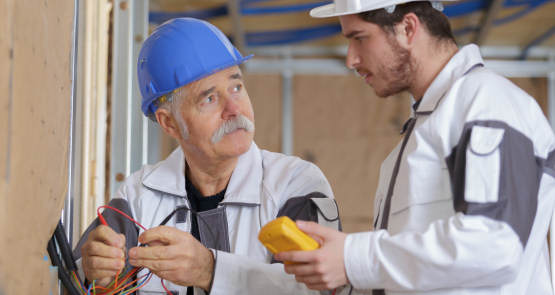Three phase power versus single phase power
Single phase power
When the waveform of single-phase power passes through zero, the power supplied is zero. The waveform cycles 50 to 60 times per second, depending where you are.
Three phase power
There are three very distinctive wave cycles, which overlap in three-phase power. Each phase in turn gets to its peak at 120 degrees separately from the others meaning the level of power-produced stays constant.
The difference between single phase & three phase explained simply
The difference between the two can easily be explained by using a paddler and a canoe. 1 paddler paddling a canoe can only power himself or herself along when their paddles are in the water. As soon as they lift them out of the water the power driving forward is disconnected.
Now think that there are 3 paddlers and they coordinate their paddling so at least one of them has their paddles in the water at any one time performing a stroke. This means the canoe will receive constant power driving it along at all times. This will prove to be more efficient and will make the canoe run a lot smoother through the water.
How electric power works
For those of you who don’t really quite understand electrics let us put it in an easier way to grasp. Lets look at Single phase against three-phase like mechanical power. They both provide power using flow with pressure or speed with force. The amount of power delivered is directly proportional by multiplying the amount of force or pressure multiplied by the speed or flow. This force or pressure is known in mechanical power as Pounds Per Square Inch and the flow or speed is known as Gallons Per Minute or The Rotating Speed. When we switch this to electrical power the force or pressure is known as Voltage and the force or pressure is known as Current & Amperes.
DC power or Direct Current is when power flows only in the one direction a bit like water flowing through a hosepipe. It used to be very commonly used for providing the necessary electric supply required. Nowadays we use AC or Alternating Current, this is when power flows constantly and alters direction. This now is commonly used as the standard method of providing electrical power. The change from DC to AC was due to AC being considerable more efficient than DC when delivering power over a long distance.
Single phase power explained

Single phase power is rather similar to a one legged person riding a bike. As he or she has only one leg to peddle with, the bike is only receiving one push from one pedal, (being one phase) as it rotates around the crankshaft, (being the neutral) to power it along. This is known as single-phase mechanical power. It is measured as the amount of leg pressure, being feet or pounds, multiplied by the speed, being the rotating speed. When we think about this in an electrical format we find the power is measured by the amount of leg pressure, being the voltage, multiplied by the flow, being the current.
Single Phase AC power has one live wire and one neutral wire. It is most commonly used on a daily basis in our homes everyday to run our appliances, white goods and lighting. Power is provided between the one live wire and the neutral wire.
Two phase power explained

Single phase AC power has one live wire and one neutral wire. It is most commonly used on a daily basis in our homes everyday to run our appliances, white goods and lighting. Power is provided between the one live wire and the neutral wire.
Single phase power is rather similar to a person riding a bike. He or she has two legs to peddle the bike so the bike is receiving two pushes from two pedals at 180 degrees apart from each other, (being two phase) as it rotates around the crankshaft, (being the neutral) to power it along. This is known as two-phase mechanical power. It is measured as the amount of leg pressure, being feet or pounds, multiplied by the speed, being the rotating speed. When we think about this in an electrical format we find the power is measured by the amount of leg pressure, being the voltage, multiplied by the flow, being the current.
Two phase power can be known as Split Phase or Dual Phase power, its still recognized as single-phase system as it has a two-wire AC circuit. It is most commonly used on a daily basis in domestic homes as Phase A & Phase B for high power and low power to run our appliances, white goods and lighting in low power and Compressors and water heaters in high power. This system is most commonly used abroad such as the USA.
Three phase power explained

Three phase electric power can be simplified to understand by the canoe method earlier or an engine using three cylinders and three pistons firing 120 degrees out of phase to each other providing power around the crankshaft being the neutral. The power electrically can be measured as the cylinder force, being the voltage, multiplied by the flow, being the amount of current.
A Three phase electric power system has an AC power circuit using three wires. It is used in commercial buildings blocks of flats and industrial areas due to its flexibility and power density. It also cheaper to install during construction as it uses less wiring, electrical services and conduits. It can provide three times the amount of power compared to a single phase with the same current and offers a number of circuits.
They are all electrical supplies. The only difference is the amount of power. A three-phase supply is bigger than a single-phase supply providing more power. Typically we all use single-phase in our homes and three-phase is more common in commercial, industrial building and blocks of flats. If your ever unsure, look at the fuse on the main supply. A three-phase system will have three 100 amp fuses where as a single-phase system will only have one 100 amp fuse.
Why Choose Acorn Electrical & Mechanical
We are based in Plymouth Devon so we cover the complete South West. We have a team of skilled electricians who are passionate about their work and have been doing it for over 15 years.
Our team offers:
Please feel free to call us for help or advice.
If you are interested in booking a survey for any of our services or just a safety check, please contact Acorn Electrical & Mechanical (AEM) and a member of our team will be happy to help or advise you. CALL now on 01752 201077 or 07779 777965

